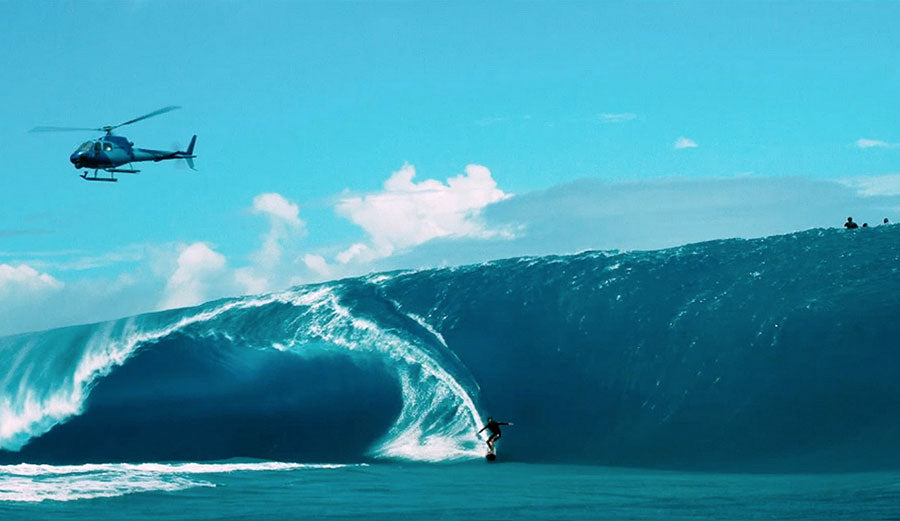And as such, surfing waves can generally be categorized into four main types of wave, each tending to suit a particular style of surfing and standard of surfer: beach breaks, reef breaks, point breaks, and river mouth waves.
Surfing Wave Types: Beach Breaks
At breach breaks the waves break over a sand bottom. Sand, and thus the shape of the seabed, shifts easily, meaning the shape and quality of the waves at a beach break is not fixed but liable to change; sometimes a propitious sand bank will hang around for months, other times it will come and go within a matter of days. That said, certain stretches of beach are known to produce consistently good sand banks, and the resultant waves will tend to be of a fairly similar character — hollow and powerful, say, or longish and gentle — from year to year.
Paddling out at a beach break is often harder as there is not always a clearly defined channel in which waves are not breaking; so too is knowing where to sit in the “line-up”. On the one hand, beach breaks are safer than reef breaks (see below) because the sand bottom poses relatively little threat; on the other, rip currents are less predictable and often stronger. And though often considered softer options than their rock-bottomed counterparts, heavy beach breaks can be every bit as powerful as a heavy reef. Still, beach breaks are generally speaking the best place to learn to surf.
It’s rare to find a beach break offering very long rides, and in fact they are often characterized by average waves and closeouts, but they can be excellent, and there are many world-famous, world-class beach breaks, among them Puerto Escondido in Mexico, Supertubos in Portugal, and the beach breaks of Hossegor, France.
Surfing Wave Types: Reef Breaks
At reef breaks, the waves break over a rock bottom. The shape of the seabed is thus permanent, and the line-up moves only in accordance with the size and direction of the swell. There’s usually a clearly defined channel next to the line-up through which to paddle out.
Most of the world’s biggest and heaviest waves break over reefs, although there are plenty of friendlier, more forgiving reefs around. Even so, generally speaking, reefs are best avoided by beginner surfers. The main danger is the reef itself, which often lurks just a few feet below the water’s surface. The threat of nasty injuries prompts some surfers, former world champion Tom Carroll among them, to opt for a helmet. Often in tropical locations, waves break over live coral, which can lacerate a surfer’s skin at the slightest contact, leaving cuts that will easily become infected if not properly treated.
Pipeline, Teahupoo, and Cloudbreak, three of the world’s most famous and photogenic waves, but also three of its most fearsome and dangerous, all break over reef; so too do the numberless perfect waves that have made the Indonesian archipelago the ultimate surfer’s playground.
Surfing Wave Types: Point Breaks
When lines of swell hit a stretch of land at an oblique or even perpendicular angle, breaking along and around the land rather than directly towards it, the phenomenon is known as a point break. They are most likely to form alongside a headland, and can break over sand or rock, but the resultant waves generally peel for far longer than most beach breaks or reefs.
Some point breaks, such as the iconic Malibu in California, offer up mellow, spilling waves characterized by a gentle pace, and are thus ideal for longboarders; others specialize in draining barrels or high-speed, muscular walls. South Africa’s Jeffrey’s Bay, where in 2015 3-time world champion Mick Fanning was accosted by a great white shark, is often considered the ultimate point break; other notable examples include Chicama in Peru, generally recognized as the world’s longest wave, and the natural wonder that is Skeleton Bay in Namibia, without question the world’s longest barrelling wave.
Some point breaks, such as the iconic Malibu in California, offer up mellow, spilling waves characterized by a gentle pace, and are thus ideal for longboarders; others specialise in draining barrels or high-speed, muscular walls. South Africa’s Jeffrey’s Bay, where in 2015 3-time world champion Mick Fanning was accosted by a great white shark, is often considered the ultimate point break; other notable examples include Chicama in Peru, generally recognized as the world’s longest wave, and the natural wonder that is Skeleton Bay in Namibia, without question the world’s longest barrelling wave.


